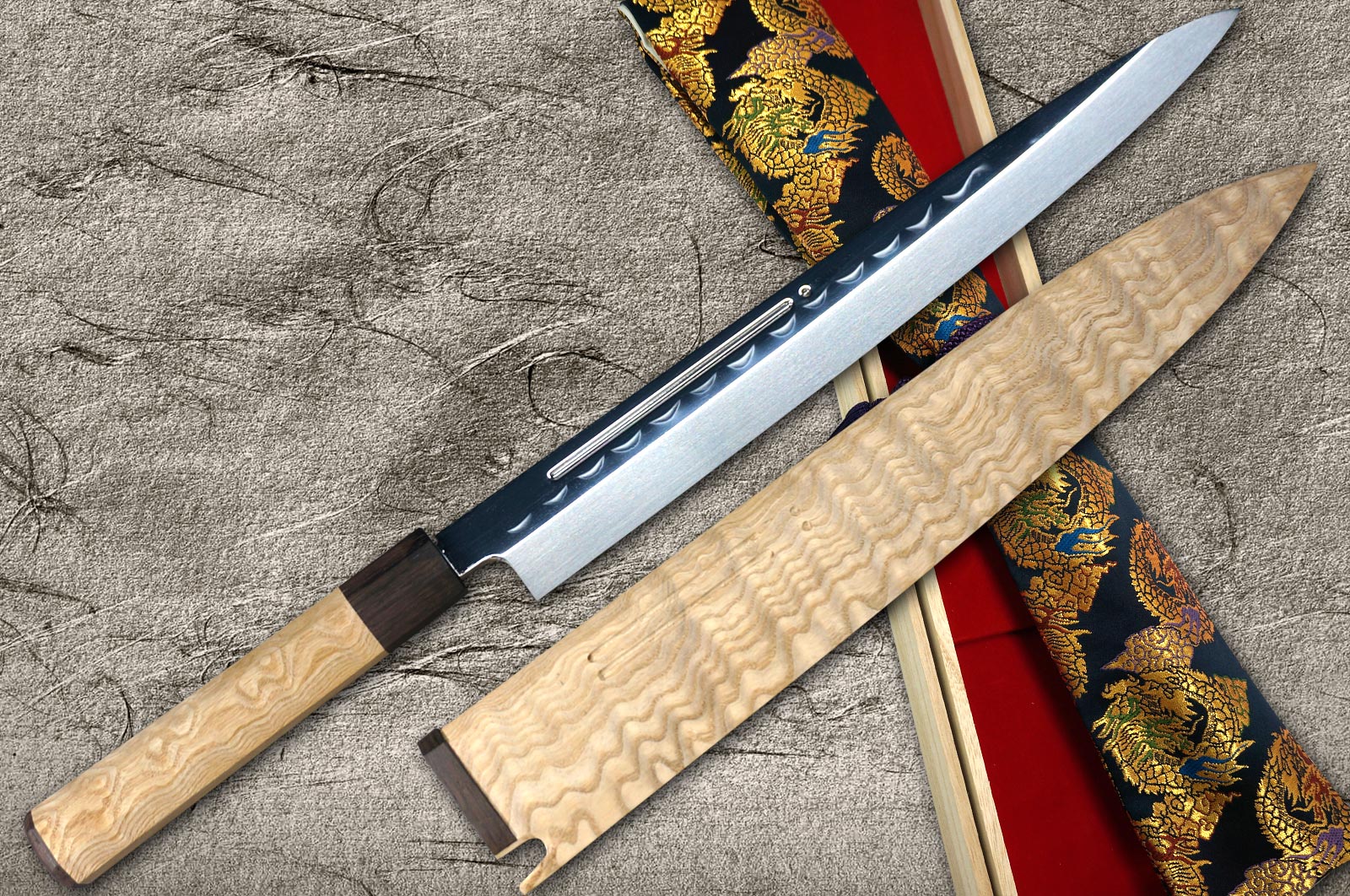The distinctive feature of a Sakai knife is in the combining of jigane and hagane. Starting with single-edged, layered knives, swordsmiths of the early Meiji era who during sword prohibition found themselves unable to forge swords, began to use their techniques to forge knives, hoping to fix the shortcomings of these knives and starting the creation of the Honyaki knife.
The value in a Japanese sword is in the combination of both hardness and toughness that is created by combining hard steel with a soft core, and that the name “Honyaki” likely derives from quenching of a fully method of the all-steel blade where the clay applied on the blade is thinned only on the edge, signifying that the method of quenching was “similar to that of a Japanese sword”.
The sugu-ha, gu-nome, midare, and various other forms of hamon, the wave-like patterns seen on the surface of the blade, can be said to be the greatest attraction of a Japanese sword, but in the case of knives, as the polishing of the blade was not as intricate, the burnished edges did not appear as clearly as the hamon (yakiba) of Japanese swords you would see at a museum or the like. [Referenced from Hamonoarekore by Kato and Asakura(2013)]
Today, however, it is not uncommon to find Honyaki knives that have undergone such intricate polising to produce beautiful hamon on the blade. The picture above is one of the Honyaki yanagiba with beautiful Mt.Fuji and wave patterns.
If you have any question, please feel free to contact us anytime.
Thank you for reading and best regards!
All the Hocho-Knife staff
~~~~~~~~~~~~~~~~~~~~~~~~~~~~~~~~~~~~~~~~~~~~~~~~~~~~~~~~~~~~~~~~~~
“Hocho” represents Made-in-Japan (Sushi / Sashimi) Kitchen Knives,
that is the soul of the cook!
~~~~~~~~~~~~~~~~~~~~~~~~~~~~~~~~~~~~~~~~~~~~~~~~~~~~~~~~~~~~~~~~~~
mport Japan.com,Inc.
Florida, USA
Kyoto and Hyogo, JAPAN
